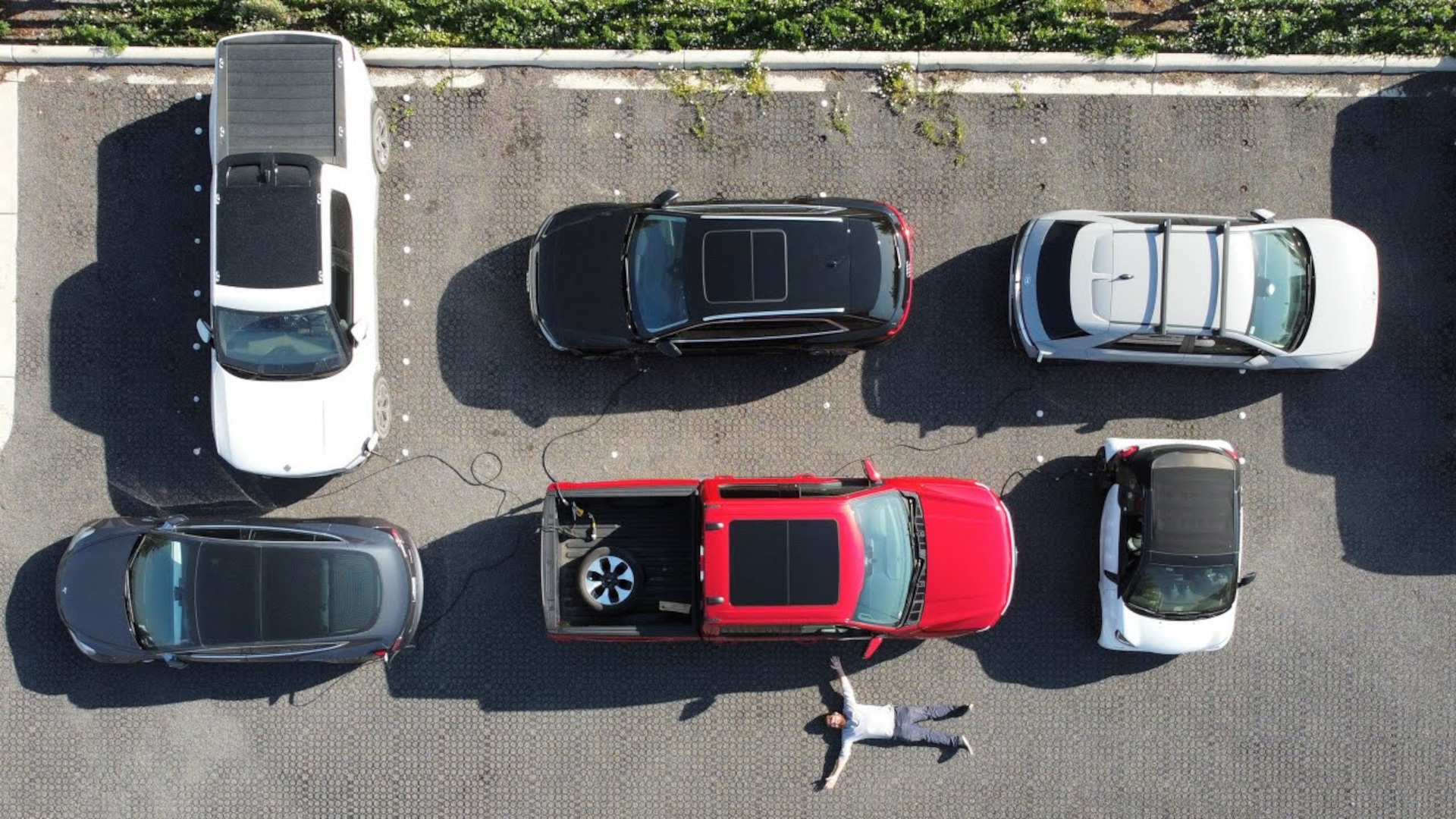

YouTube channel Out of Spec Reviews recently decided to push the Ford F-150 Lightning to the limit in their latest video, using its onboard hardware to charge five other EVs all at the same time.
The F-150 Lightning is well known for its power supply capability, with Ford touting its ability to run a house off the grid for days at a time. The company even threw in adapters with early deliveries that would let owners charge up Teslas from the Pro Power Onboard supply. Out of Spec Reviews wanted to see if it could charge multiple cars at once, and set up a stress test to see if the hardware could take the strain.

Configured with the top-tier Pro Power Onboard system, the F-150 Lightning can deliver up to 9.6 kilowatts. One circuit serves the sockets in the cabin and the frunk, good for 2.4 kW. Meanwhile, twin inverters in the rear bed deliver 3.6 kW each, and can be ganged up to a single 240V outlet to act as a single 7.2 kW supply if so desired.
For the test, a Hyundai Ioniq 5 and a Smart EQ cabrio were hooked up to the front circuit. The Ioniq 5 drew 1,340 watts and the Smart EQ pulled 890 W respectively when on charge, for a total of 2,230 W. At the rear, one 3.6 kW inverter bank was hooked up to a Rivian R1T, which drew the full power available from the port. The second inverter bank in the rear was used to charge both a Tesla Model 3 and an Audi eTron, drawing 2,380 W together in order to avoid tripping a 20-amp breaker on the 120V plug outlets.

It takes a mess of adapters and portable EV chargers to get everything hooked up, but it’s surprisingly plug-and-play. With the various power outlets switched on and cables in place, the five vehicles begin charging happily.
The cars were left overnight to suck up juice for 9 hours. To allow the test to run all night, the powerdown timer was disabled, and the Lightning was set to run the outlets until there were just 10 miles of range left in its own battery. The Lightning’s frunk was left propped open to avoid a power limit on the front circuit when the frunk is closed, presumably to avoid overheating. The risk of the truck being stolen was minimal, as the power outlets can be left running without the keys in the truck, preventing it from being started and driven away.
On return in the morning, the vehicles were still happily charging away with no faults to speak of. The Pro Power Onboard system was capable of running at high output levels for 9 hours continually without running into any overheating or derating issues.

All the vehicles managed to grab a charge successfully. However, range added was limited by the slow level 1 and level 2 charging methods used, akin to plugging into a power outlet at home.
The team kept the results simple, due to the limited telemetry available. The Smart EQ managed to go from 38% state-of charge (SOC) to 77%, thanks in part to its small battery, while the Ioniq 5 got from 69% up to 80% overnight. Similar figures were seen with the eTron and Model 3, going from 50-60% and 38-51% SOC respectively. The Rivian reported actual energy figures, however, collecting a total of 22 kWh over the 9-hour charge period.
As for the Lightning, it started the test at 97% SOC with 127.65 kWh in the battery. After 9 hours of charging five separate EVs all at once, it was down to 46.17 kWh, or a 38% SOC. That leaves plenty of juice to get the Lightning to a charger.
It might seem like a silly test, but it actually demonstrates how the F-150 Lightning can rescue other stranded EVs. A common scenario raised by critics is that electric cars could be stranded en masse on highways if their batteries ran down during an extended winter traffic jam. Unlike gas-powered cars, EVs can’t be refueled by a can. However, as seen here, it’s plausible that an F-150 Lightning could help get a few miles of juice into multiple EVs at once, just enough to get them on the way to a proper charger.
Out of Spec Reviews set out to push the Pro Power Onboard system hard. They did just that, and showed us that throwing a bunch of power sockets into a truck is useful for a lot more than just charging some laptops. Food for thought.
Got a tip? Let the author know: lewin@thedrive.com